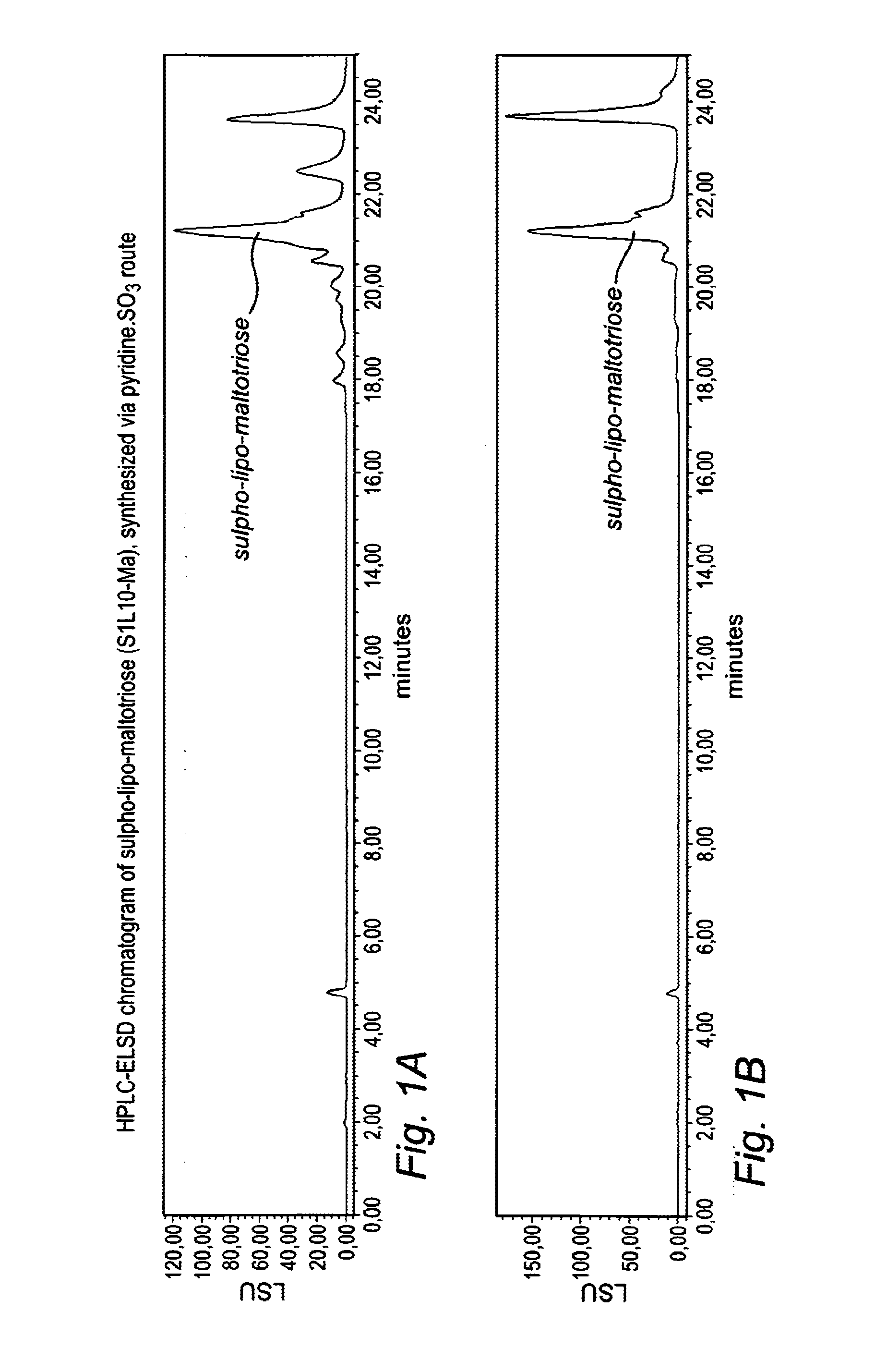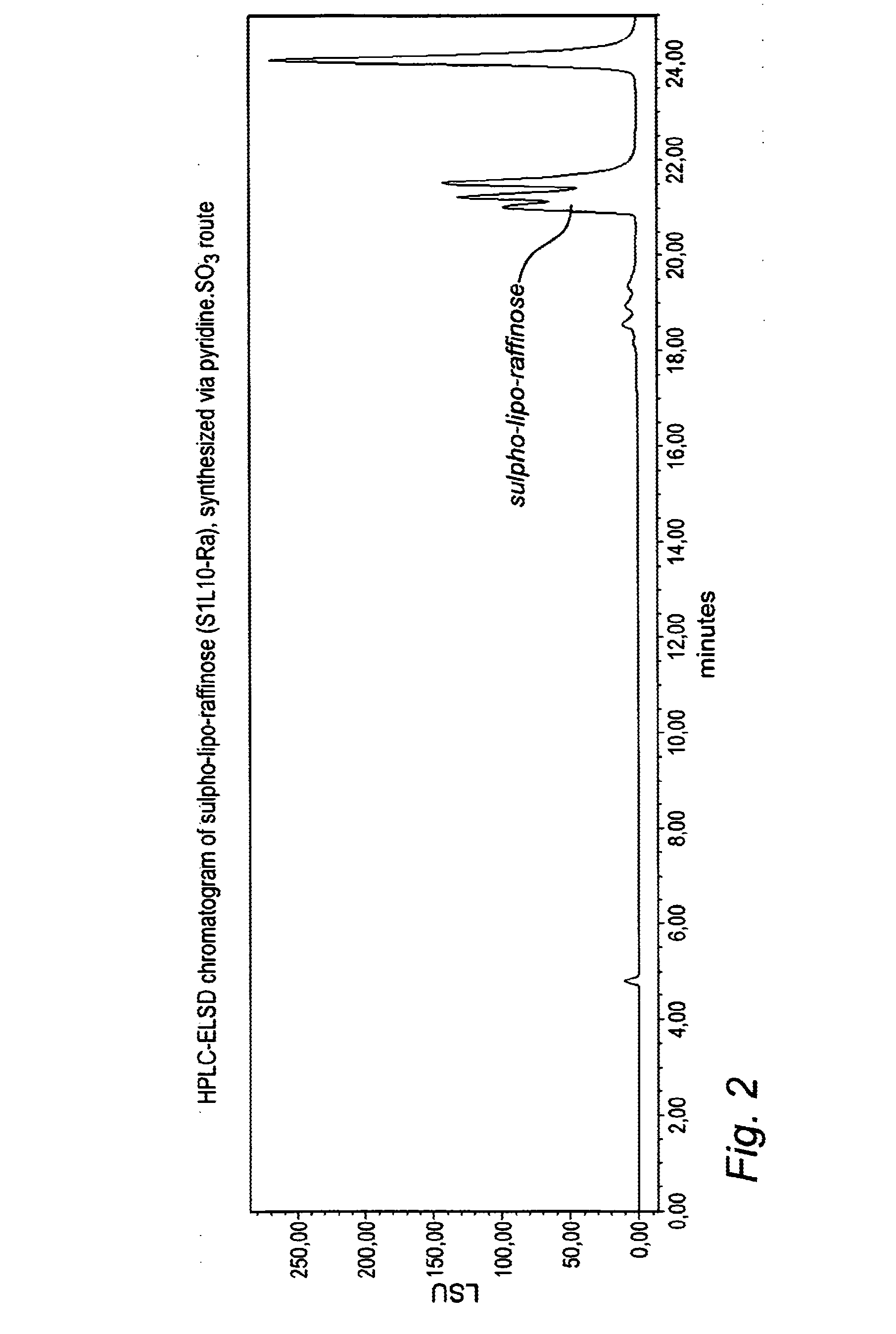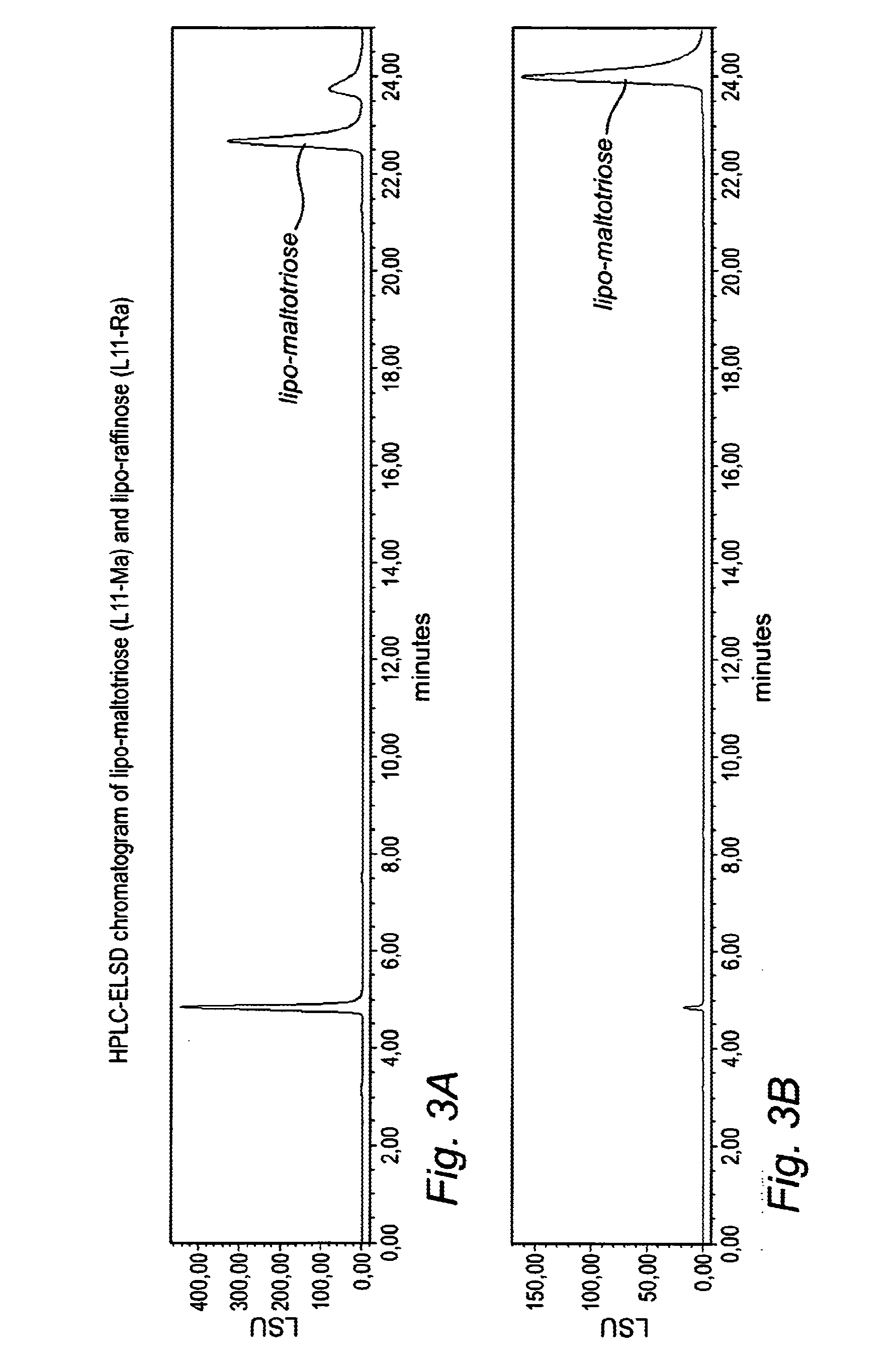Trisaccharide derivates, and their use as adjuvants
- Summary
- Abstract
- Description
- Claims
- Application Information
AI Technical Summary
Benefits of technology
Problems solved by technology
Method used
Image
Examples
example 1
General Synthesis of Sulpho-Lipo-Trisaccharides According to the Invention
[0055]A trisaccharide is dried in a vacuum oven to remove the crystal water. The trisaccharide (5 g) is subsequently dissolved, under a stream of nitrogen, in 30 mL of DMF and 14 mL of pyridine in a 100 mL three-neck round-bottom flask, equipped with a reflux-condensor. 1.05 equivalent of pyridine.SO3 is added under vigorous stirring. After 1 hr the flask is cooled in ice water and under vigorous stirring lauroyl chloride is added drop-wise to prevent heating of the reaction mixture. After 15 min the ice bath is slowly heated to 40° C. The progress of the reaction is monitored by HPLC. After completion of the reaction the mixture is concentrated in vacuo in a rotary evaporator (heated up to 60° C.). The crude product is taken up in 300 mL heptane and 150 mL brine. The organic layer is separated in a 500 mL reparatory funnel, dried on sodium sulfate and filtered. The heptane solution is concentrated in vacuo. T...
example 2
Synthesis of Sulpho-Lipo-Maltotriose (S1L10-Ma) Via Pyridine.SO3 Route
[0056]The title product was synthesized following the general method described in Example 1 with the following details: maltotriose (5.1 g, 10 mmol) was dried in a vacuum stove at 3, suspended in 2 mL of DMF. After 1 hr the sulfo-trisaccharide was esterified in an ice bath with 11 equivalents (25.5 mL) of lauroyl chloride. The mixture was slowly heated to 40° C. and reacted for 3 hrs. Reaction steps were followed by HPLC-ELSD. The product was isolated after extraction and triethylamine exchange.
[0057]Yield of the thick brown-yellow syrup: 15.5 g+5.5 g (second crop from evaporation flask after heating to 50° C.). HPLC-ELSD chromatogram: see FIG. 1A.
example 3
Alternative Synthesis of Sulpho-Lipo-Maltotriose (S1L10-Ma) Via Pyridine.SO3 Route
[0058]The title product was synthesized following the general method described in Example 1 with the following details: maltotriose (5.0 g, 10 mmol) was dried in a vacuum stove at 3 was added as a suspension in 14 mL of pyridine. After 1 hr the sulpho-trisaccharide was esterified in an ice bath with 11 equivalents (25.2 mL) of lauroyl chloride and was slowly heated to 40° C. Samples for HPLC-ELSD analysis were taken at regular time points in the process. The reaction with lauroyl chloride was left overnight at ambient temperature Work up was done as described in example 1. Yield of the thick brown-yellow syrup: 24.7 g. HPLC-ELSD chromatogram: see FIG. 1B.
PUM
| Property | Measurement | Unit |
|---|---|---|
| Volume | aaaaa | aaaaa |
| Acidity | aaaaa | aaaaa |
| Polymer chain length | aaaaa | aaaaa |
Abstract
Description
Claims
Application Information
 Login to View More
Login to View More - R&D Engineer
- R&D Manager
- IP Professional
- Industry Leading Data Capabilities
- Powerful AI technology
- Patent DNA Extraction
Browse by: Latest US Patents, China's latest patents, Technical Efficacy Thesaurus, Application Domain, Technology Topic, Popular Technical Reports.
© 2024 PatSnap. All rights reserved.Legal|Privacy policy|Modern Slavery Act Transparency Statement|Sitemap|About US| Contact US: help@patsnap.com










